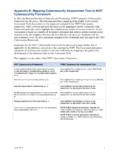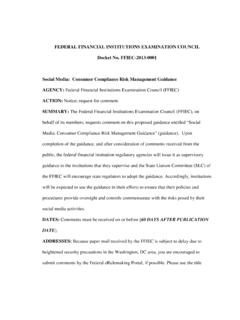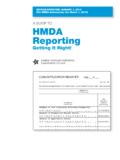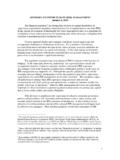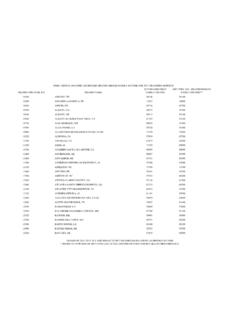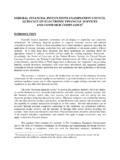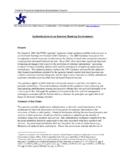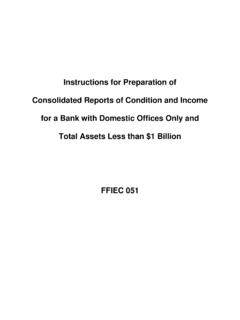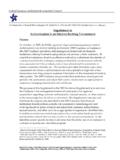Transcription of Cybersecurity Assessment Tool - FFIEC Home Page
1 Paperwork Reduction Act (PRA) OMB Control No. 1557-0328; Expiration date: August 31, 2019 The above OMB Control Number and expiration date pertain to a requirement of the Paperwork Reduction Act and its implementing regulation that a federal agency may not conduct or sponsor, and a person (or organization) is not required to respond to, a collection of information unless it displays a currently valid OMB control number and, if appropriate, an expiration date. See 44 USC 3506(c)(1)(B) and 5 CFR (b)(2)(i), (b)(1). FFIEC Cybersecurity Assessment tool May 2017 FFIEC Cybersecurity Assessment tool Contents May 2017 i Contents Contents.
2 I User s Guide .. 1 overview .. 1 Background .. 2 Completing the Assessment .. 2 Part One: Inherent Risk Profile .. 3 Part Two: Cybersecurity Maturity .. 5 Interpreting and Analyzing Assessment 8 Resources .. 10 Inherent Risk Profile .. 11 Cybersecurity Maturity .. 19 Domain 1: Cyber Risk Management and Oversight .. 19 Domain 2: Threat Intelligence and Collaboration .. 30 Domain 3: Cybersecurity Controls .. 34 Domain 4: External Dependency Management .. 47 Domain 5: Cyber Incident Management and Resilience .. 51 Additional Resources overview for Chief Executive Officers and Boards of Directors Appendix A: Mapping Baseline Statements to FFIEC IT examination Handbook Appendix B: Mapping Cybersecurity Assessment tool to NIST Cybersecurity Framework Appendix C.
3 Glossary FFIEC Cybersecurity Assessment tool User s Guide May 2017 1 User s Guide overview In light of the increasing volume and sophistication of cyber threats, the federal financial institutions examination Council1 ( FFIEC ) developed the Cybersecurity Assessment tool ( Assessment ), on behalf of its members, to help institutions identify their risks and determine their Cybersecurity maturity. The content of the Assessment is consistent with the principles of the FFIEC Information Technology examination Handbook (IT Handbook) and the National Institute of Standards and Technology (NIST) Cybersecurity Framework,2 as well as industry accepted Cybersecurity practices.
4 The Assessment provides institutions with a repeatable and measureable process to inform management of their institution s risks and Cybersecurity preparedness. The Assessment consists of two parts: Inherent Risk Profile and Cybersecurity Maturity. The Inherent Risk Profile identifies the institution s inherent risk before implementing controls. The Cybersecurity Maturity includes domains, Assessment factors, components, and individual declarative statements across five maturity levels to identify specific controls and practices that are in place. While management can determine the institution s maturity level in each domain, the Assessment is not designed to identify an overall Cybersecurity maturity level.
5 To complete the Assessment , management first assesses the institution s inherent risk profile based on five categories: Technologies and Connection Types Delivery Channels Online/Mobile Products and Technology Services Organizational Characteristics External Threats Management then evaluates the institution s Cybersecurity Maturity level for each of five domains: Cyber Risk Management and Oversight Threat Intelligence and Collaboration Cybersecurity Controls External Dependency Management Cyber Incident Management and Resilience 1 The FFIEC comprises the principals of the following: The Board of Governors of the federal Reserve System, federal Deposit Insurance Corporation, National Credit Union Administration, Office of the Comptroller of the Currency, Consumer financial Protection Bureau, and State Liaison Committee.
6 2 A mapping is available in Appendix B: Mapping Cybersecurity Assessment tool to the NIST Cybersecurity Framework. NIST reviewed and provided input on the mapping to ensure consistency with Framework principles and to highlight the complementary nature of the two resources. FFIEC Cybersecurity Assessment tool User s Guide May 2017 2 By reviewing both the institution s inherent risk profile and maturity levels across the domains, management can determine whether its maturity levels are appropriate in relation to its risk. If not, the institution may take action either to reduce the level of risk or to increase the levels of maturity.
7 This process is intended to complement, not replace, an institution s risk management process and Cybersecurity program. Background The Assessment is based on the Cybersecurity Assessment that the FFIEC members piloted in 2014, which was designed to evaluate community institutions preparedness to mitigate cyber risks. NIST defines Cybersecurity as the process of protecting information by preventing, detecting, and responding to attacks. As part of Cybersecurity , institutions should consider managing internal and external threats and vulnerabilities to protect infrastructure and information assets.
8 The definition builds on information security as defined in FFIEC guidance. Cyber incidents can have financial , operational, legal, and reputational impact. Recent high-profile cyber attacks demonstrate that cyber incidents can significantly affect capital and earnings. Costs may include forensic investigations, public relations campaigns, legal fees, consumer credit monitoring, and technology changes. As such, Cybersecurity needs to be integrated throughout an institution as part of enterprise-wide governance processes, information security, business continuity, and third-party risk management.
9 For example, an institution s Cybersecurity policies may be incorporated within the information security program. In addition, Cybersecurity roles and processes referred to in the Assessment may be separate roles within the security group (or outsourced) or may be part of broader roles across the institution. Completing the Assessment The Assessment is designed to provide a measurable and repeatable process to assess an institution s level of Cybersecurity risk and preparedness. Part one of this Assessment is the Inherent Risk Profile, which identifies an institution s inherent risk relevant to cyber risks.
10 Part two is the Cybersecurity Maturity, which determines an institution s current state of Cybersecurity preparedness represented by maturity levels across five domains. For this Assessment to be an effective risk management tool , an institution may want to complete it periodically and as significant operational and technological changes occur. Cyber risk programs build upon and align existing information security, business continuity, and disaster recovery programs. The Assessment is intended to be used primarily on an enterprise-wide basis and when introducing new products and services as follows: Enterprise-wide.
